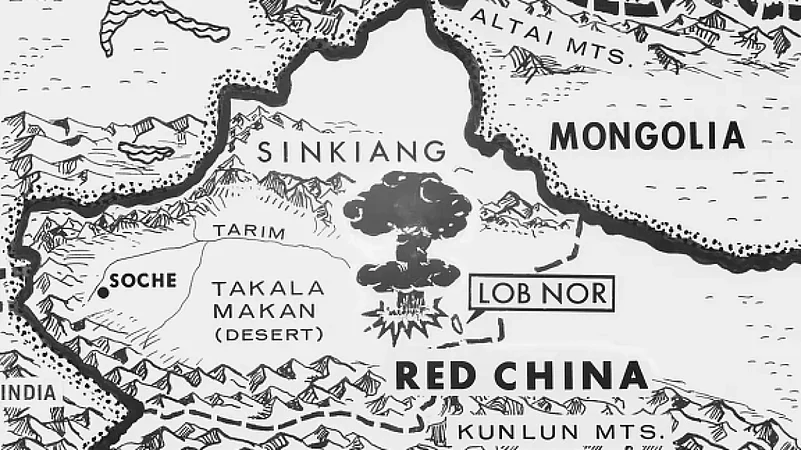A country’s intelligence capability can be judged only with a legally mandated system of oversight coupled with public declassification of intelligence records through something like the US Freedom of Information (FOI) Act.
Take for instance the Chinese quest for nuclear weapons: US archives indicated that the Chinese Embassy in New Delhi had reported to Beijing that its first nuclear test on 16 October 1964 at Lop Nor had given India’s “anti-China policy a head-on blow and sent shock waves in India. Shastri (Prime Minister) tried to get various countries to censure us, but the Asian and African countries did not go along with him”. We still do not know whether our agencies were aware of this.
George Washington University’s National Security Archive (GWU NSA) revealed that the first American intelligence estimate on the Chinese test to President Lyndon Johnson was on April 17, 1964. It said that China might detonate a device “any time”, most probably by the end of the year or next year. Quoting Mao’s doctrine of “strategically despise but tactically respect the enemy”, the assessment said that it was more to “weaken the will of Asian countries” than challenging the United Stats.
It discussed various policy options like pre-emptive military action, visible military posture by using conventional means and assurance of US support to Asian countries. It also said that “of the two non-Communist potential nuclear powers in Asia (India and Japan), India is more likely to seek a nuclear capability in the foreseeable future”.
Another estimate dated August 26, 1964 confirmed the site as Lop Nor after aerial photography. However, it went wrong in concluding that the test would not occur in 1964 as fissile material was not ready. GWU NSA, in their comments, referred to a dispute between CIA and State Department: while CIA felt that the test would be delayed, the State’s Bureau of Intelligence & Research was emphatic that the test would be around October 1, 1964 as the Chinese had already constructed a 325-foot test tower.
On September 16, 1964 US National Security Adviser McGeorge Bundy wrote to President Johnson that the consensus among the top security experts was against any pre-emptive action against China. They felt that the Secretary of State should discuss with Soviet Ambassador Anatoly Dobrynin and that CIA should organise an overflight over the test area with a Chinese pilot in a plane with Chinese markings.
Even as these secret estimates were being circulated, it was amusing to see that a ‘confidential’ State Department cable of October 9 had quoted a Radio Djakarta broadcast of the same date that the Chinese tests would take place before the end of the month, which was on the dot as the tests were conducted on 16th.
The Pentagon followed up with a longer assessment on October 7, 1964, giving panicky predictions on what the Chinese would do as a nuclear power: it said that the first test would be followed by several more to improve weapons design, that by 1970 China might have ballistic missiles with nuclear warheads targeted on the cities in Asia and that by 1975 their intercontinental capability would threaten European and American cities.
It feared that in another five years, “it will be necessary to think in terms of a possible 100 million US deaths whenever a serious conflict with China threatens”. China was determined to gain global status primarily by reducing US power and influence in Asia and Western Pacific and that there would be “a continuous deterioration in our ability to influence the course of events not only in Asia but elsewhere”.
Contrary to this prediction, China did not flaunt its nuclear power in the 20th and early 21st centuries to compete with the United States to become a global superpower. Instead, it followed a policy of an ‘economic’ rather than a ‘military’ power with its policy of ‘No First Use’. However, this seems to be changing, according to the Center for Arms Control & Non-Proliferation, which said on August 17 that China is adopting coercive ‘military power strategy’ at least with Asian powers due to its economic distress. This was with reference to the water cannon attack on August 5 on a Philippine Coast Guard vessel. The Center estimates that China’s stock of 400 nuclear warheads would increase to 1,500 by 2035.
Surprisingly, US intelligence totally failed to detect India’s 1974 Pokhran-1 and 1998 Pokhran-2. GWU NSA studied 40 US documents and said that “US Intelligence failed to warn of India's nuclear tests despite tracking nuclear weapons potential since 1950s”. Senator Richard Shelby (R-Alabama), then Chairman of the Senate Intelligence Committee, had described the 1998 test as a colossal US intelligence failure. This was despite India “pulling back” from a test in 1995 “due to American pressure that followed the discovery of test preparations by US spy satellites”.
(Vappala Balachandran is a former Special Secretary, Cabinet Secretariat, and author of ‘Intelligence Over Centuries’. Views expressed are personal.)
















